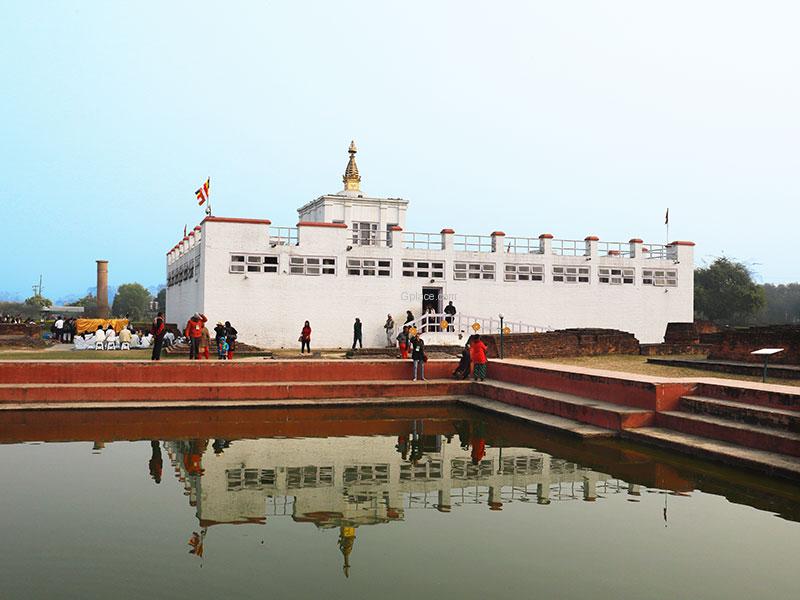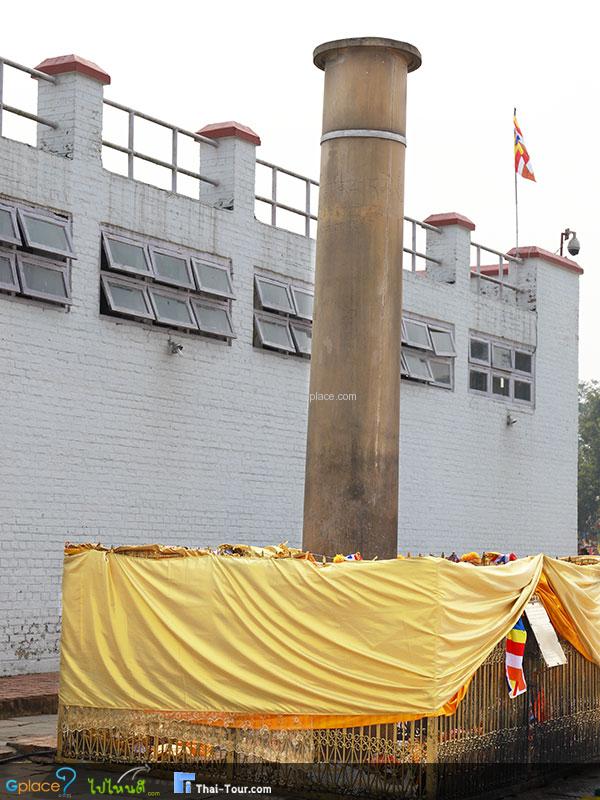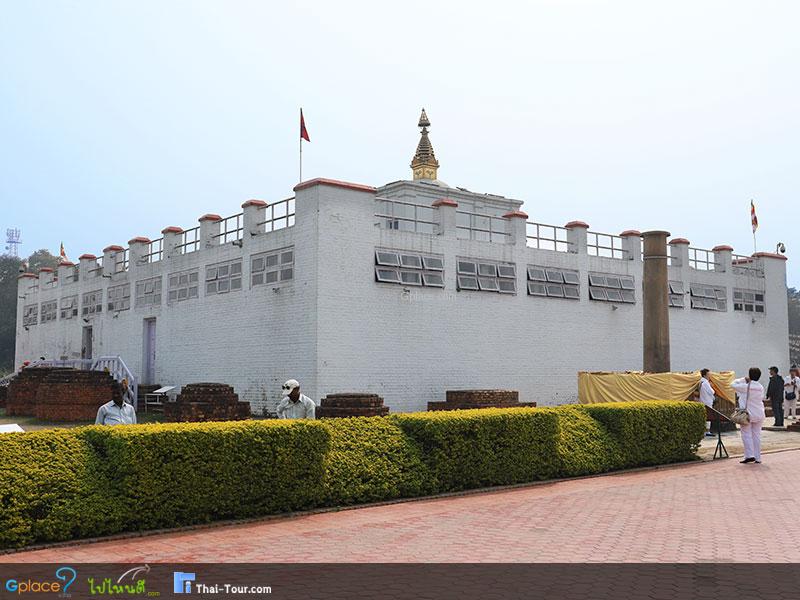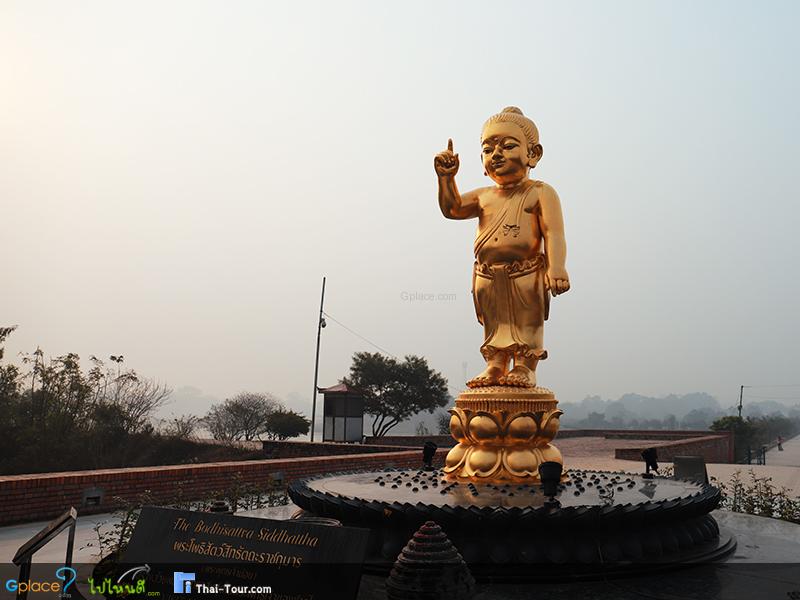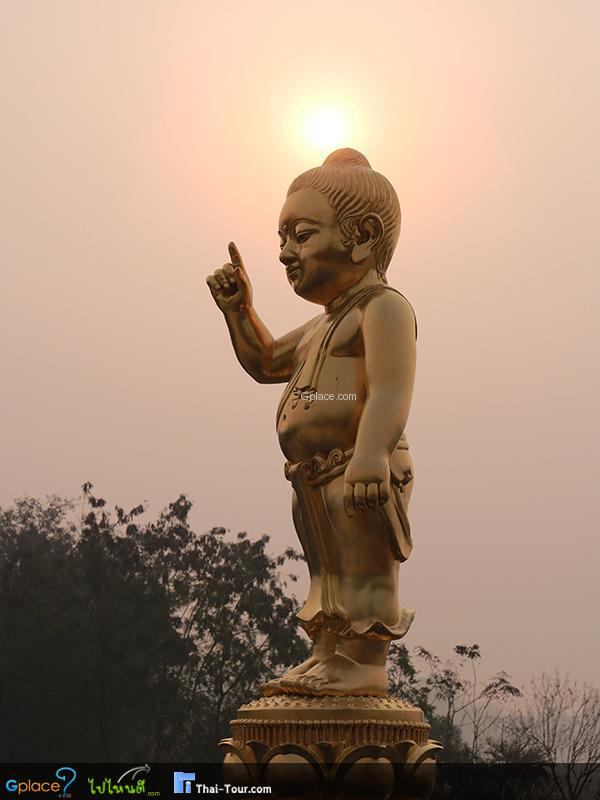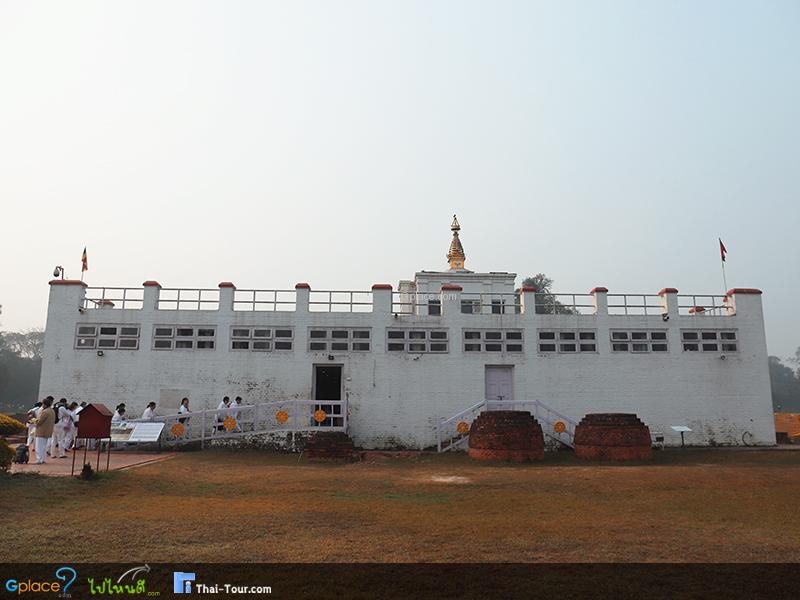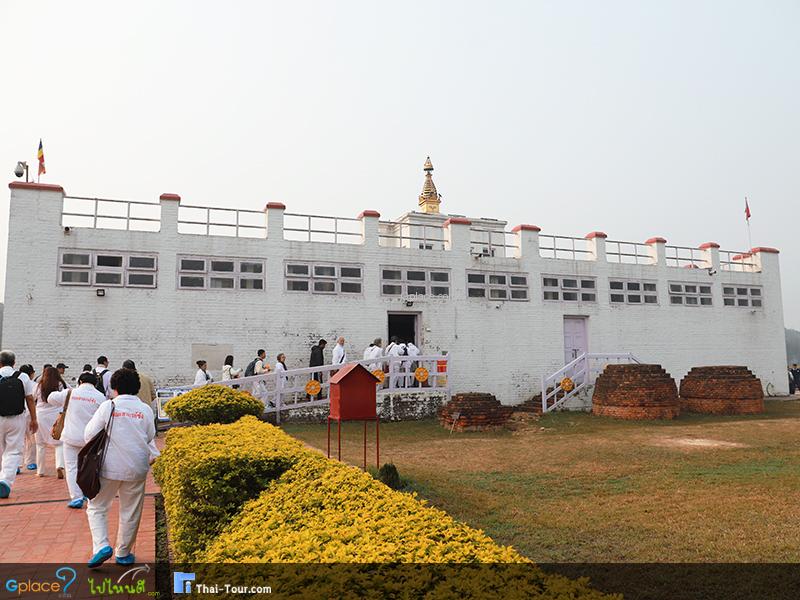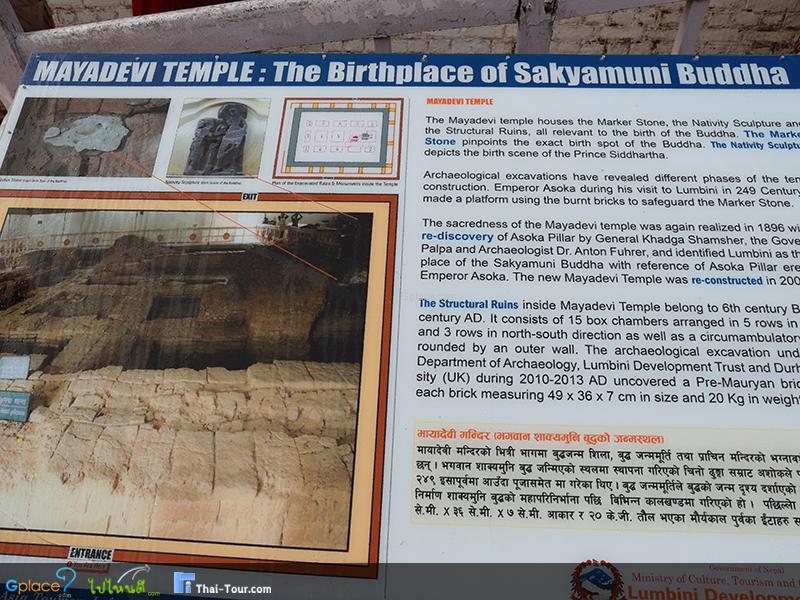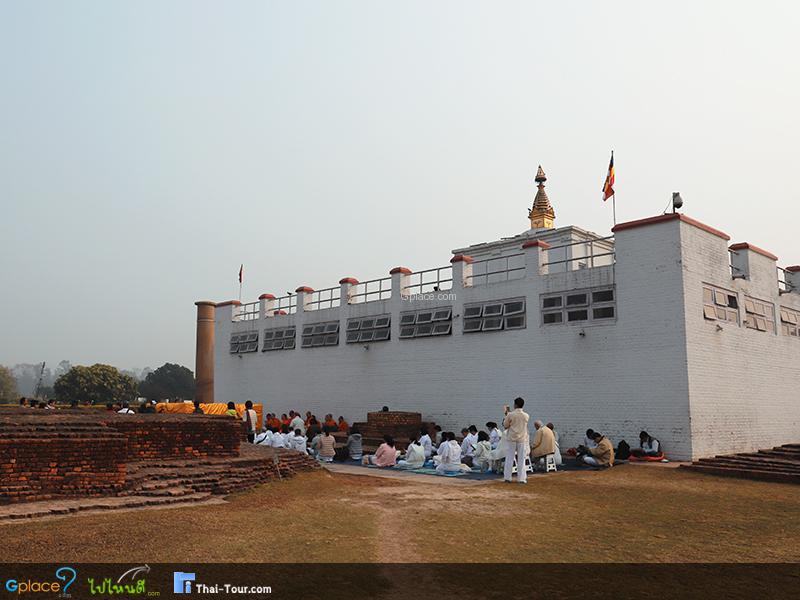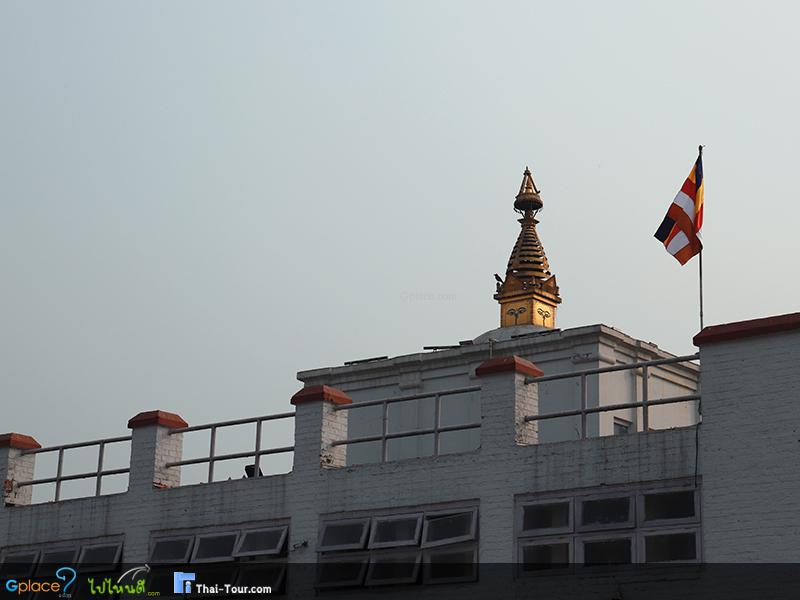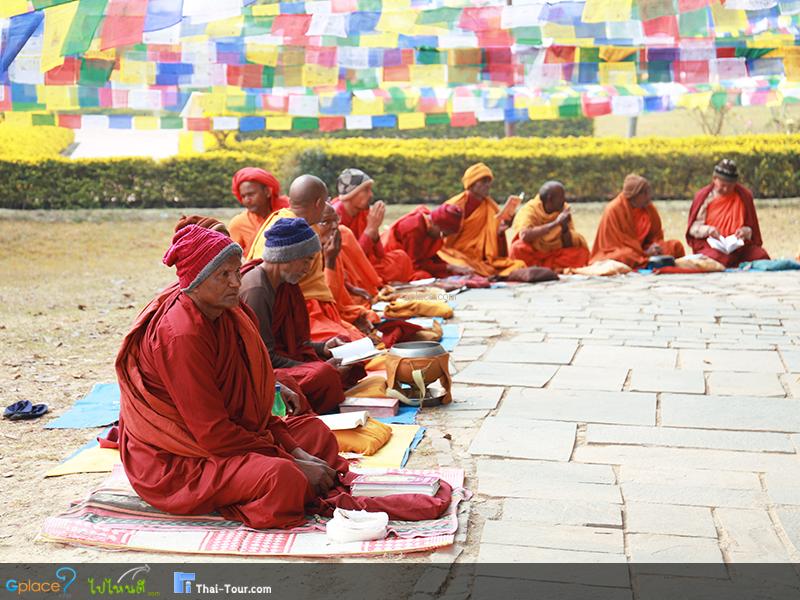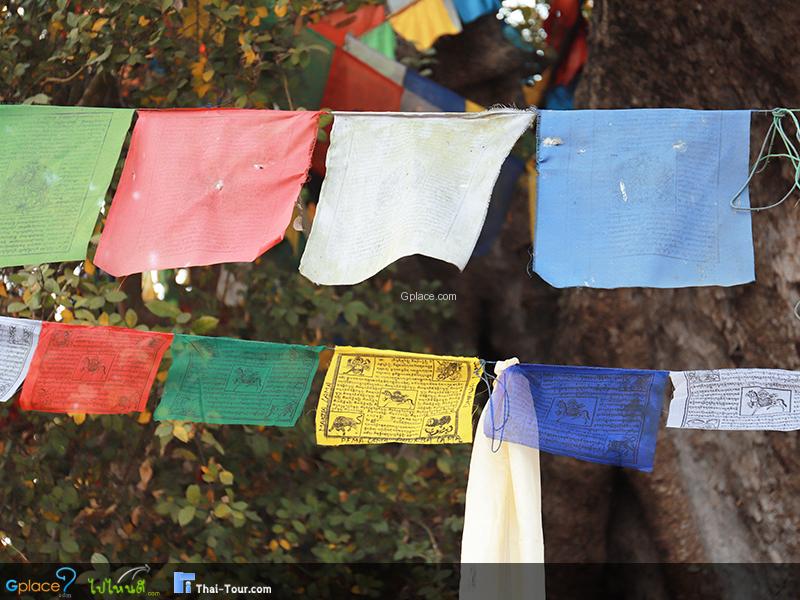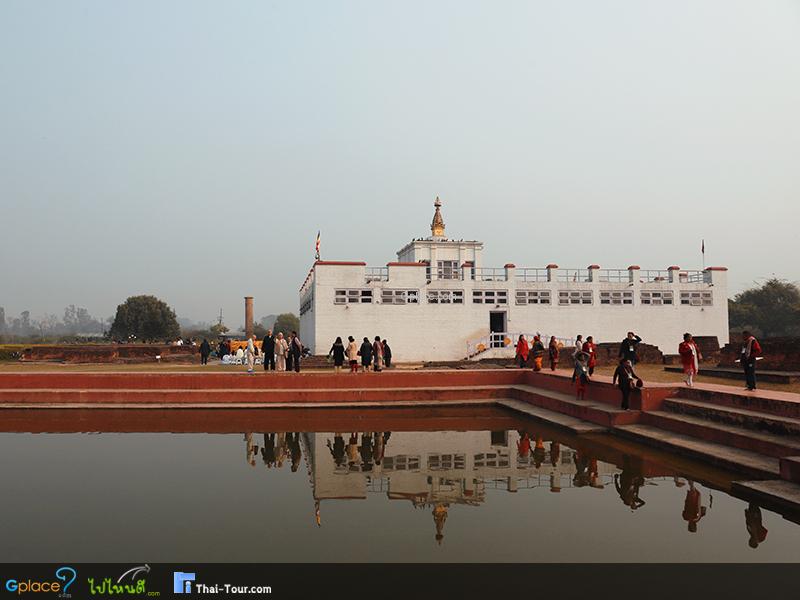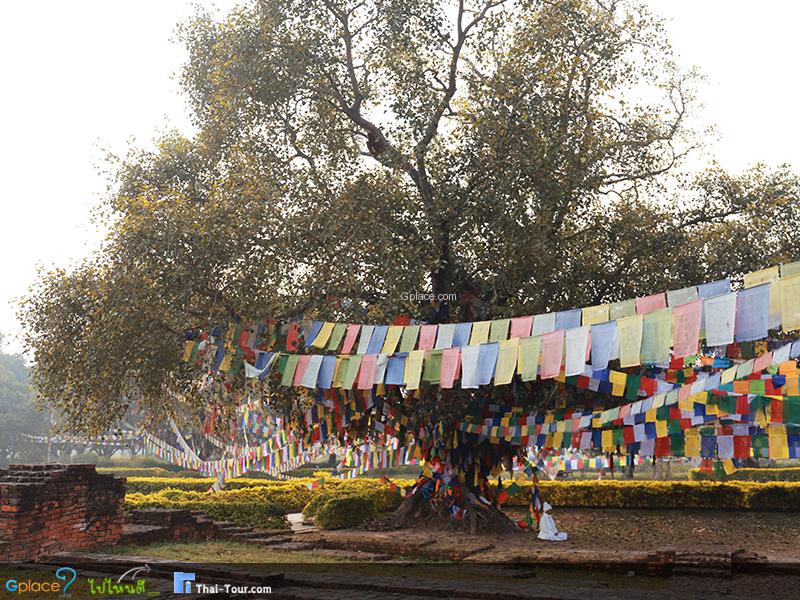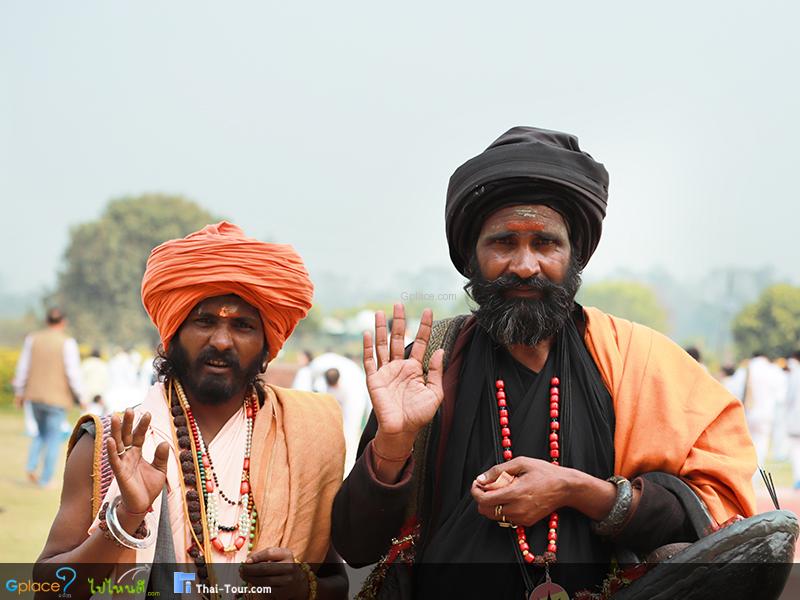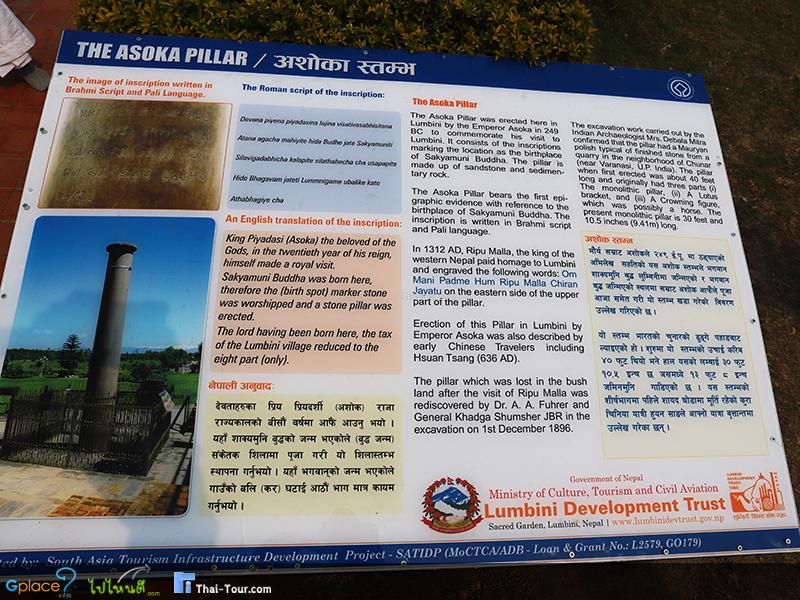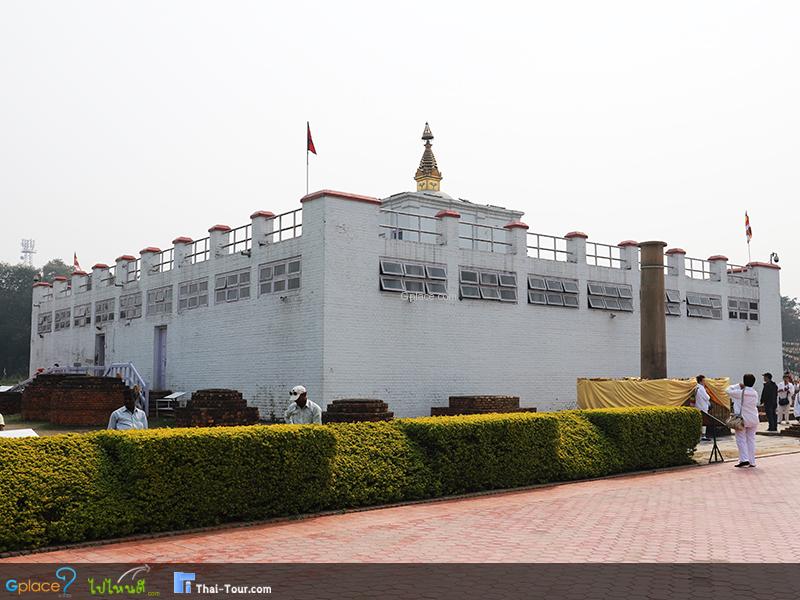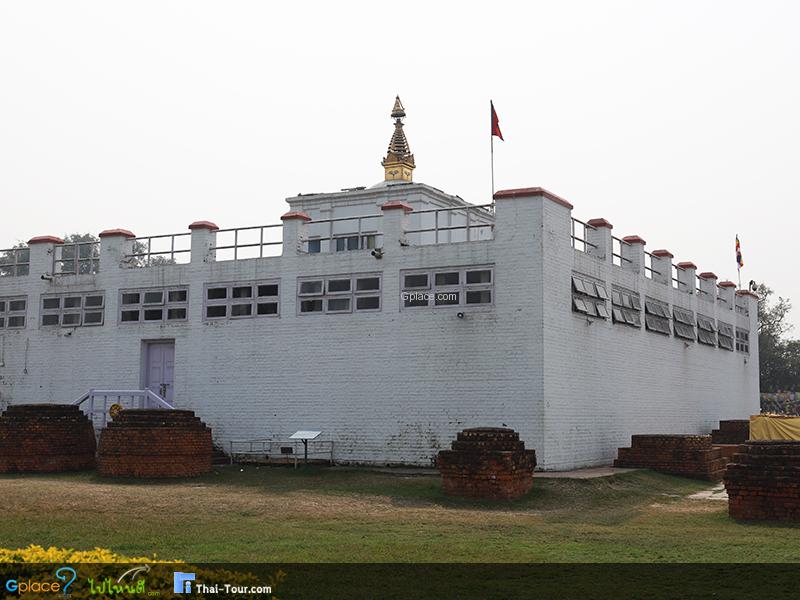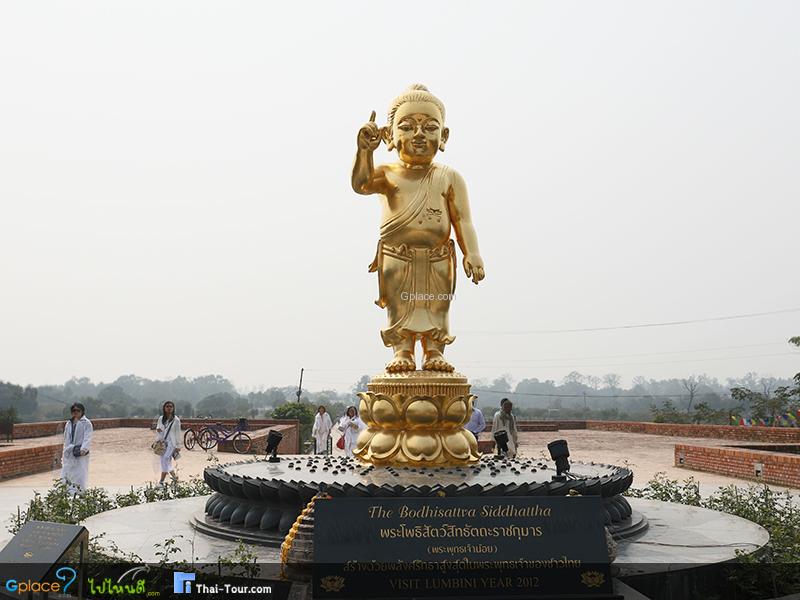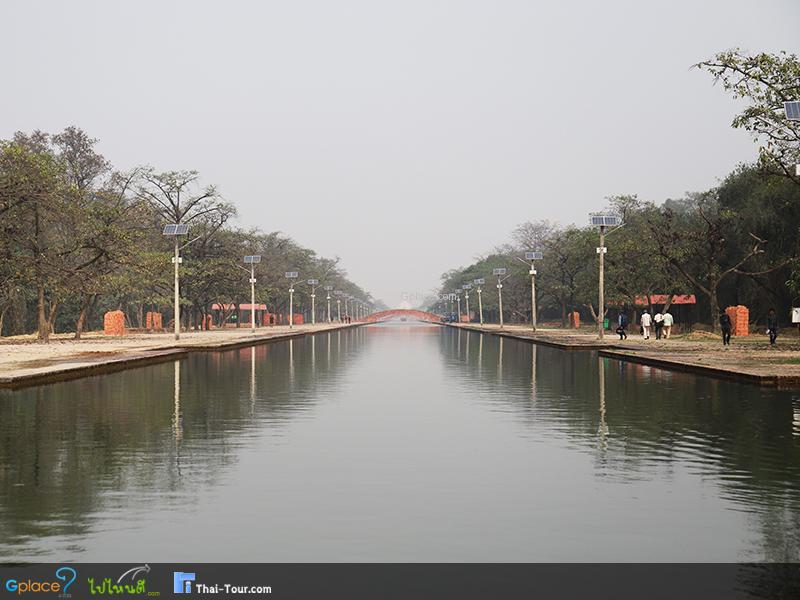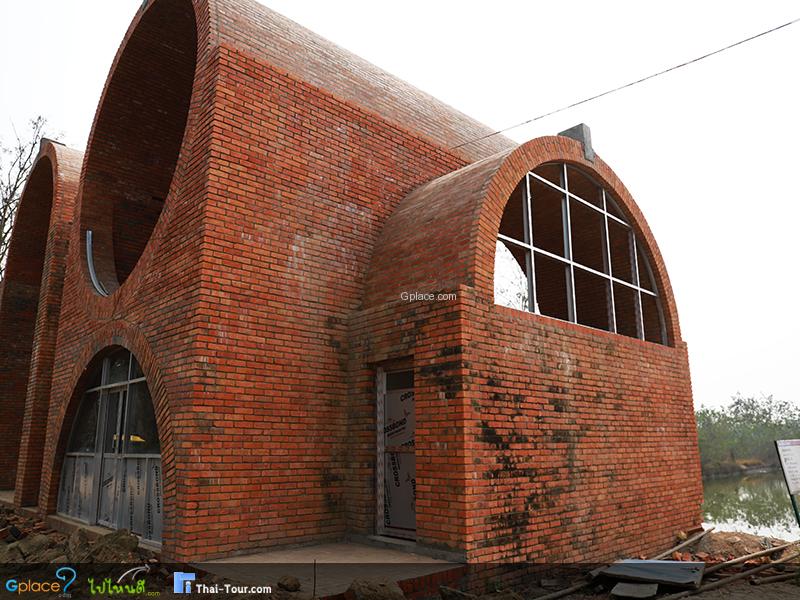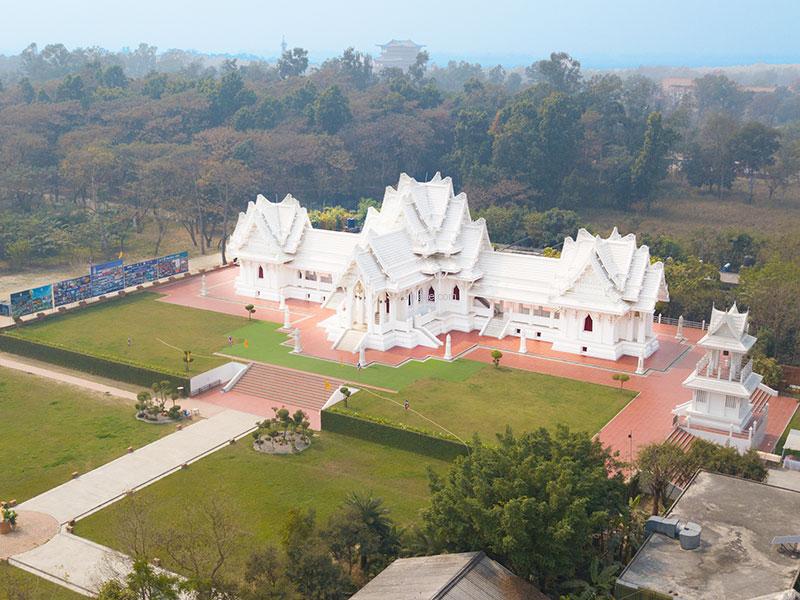“Emperor Ashoka's Pillar, Mayadevi Temple, Puskarini Pond, and an international Buddhist park with temples from around the world.”
Lumbini Vana is the sacred birthplace of Prince Siddhartha (who later became the enlightened Buddha Gautama). This site is strategically located on the border, approximately 11 km east of Kapilavastu (his father's city) and 11 km west of Devadaha (his mother's city). This location aligns with Buddhist scriptures stating that Lumbini Vana, the birthplace, is situated between Kapilavastu and Devadaha.
Currently, Lumbini is a border town located in Tilaurakot, Nepal, adjacent to the border with Gorakhpur, India. It spans an area of approximately 2,000 rai (about 320 hectares). The authorities refer to this place as Rummindei (Lumbini). It has a rural character with a sparse population and a few Buddhist structures. However, there are several Buddhist temples in the area, including Wat Thai Lumbini. In 1997, Lumbini Vana was designated by UNESCO as a World Heritage Site, under the cultural heritage category.
Lumbini Vana has been developed and restored to become a "World Buddhist Historical Park." This initiative originated from U Thant, a Burmese Buddhist who served as Secretary-General of the United Nations. He envisioned a project to restore Lumbini Vana as a spiritual center for Buddhists on a rectangular area of over 6,000 rai (about 960 hectares) extending north-south. The area is divided into sections for reforestation and the construction of international Buddhist temples from over 41 countries worldwide. The ancient archaeological site of Lumbini Vana is located in the southern part. Currently, there are many large Thai and other Buddhist temples from around the world built here to accommodate pilgrims and devotees.
Points of Interest
-
Emperor Ashoka's Pillar: This sandstone pillar was erected by Emperor Ashoka in 294 BE (Buddhist Era) to mark this site as the birthplace of Prince Siddhartha. The pillar remains in its original location to this day.
-
Mayadevi Temple: Inside, there is a stone carving depicting Queen Mahamaya giving birth to the Crown Prince. It is an ancient temple, contemporary with Ashoka's Pillar. Currently, the Nepalese authorities have built a new temple over the old Mayadevi Temple. During excavations, a stone inscription resembling a footprint was discovered, believed to be the inscription of Prince Siddhartha's seventh step, which he is said to have taken on the day of his birth.
-
Baby Buddha (Birth Posture Statue): A statue of the newborn Prince Siddhartha, built by Thai Buddhists, located near the entrance of Lumbini Vana.
-
Puskarini Pond: A sacred bathing pond located in front of the Mayadevi Temple. This pond, mentioned by ancient travelers, still exists today.
History of Lumbini Vana After Buddha's Parinirvana
A king who received a share of the Buddha's sacred relics had them enshrined in a stupa not far from Lumbini Vana. In 294 BE, Emperor Ashoka embarked on a pilgrimage to Buddhist holy sites throughout Jambudipa (the Indian subcontinent), accompanied by Moggaliputta-Tissa Thera (or Upagutta). Upon arriving at Lumbini, he instructed Moggaliputta-Tissa Thera to guide him and identify the exact spot where Prince Siddhartha was born. Emperor Ashoka ordered the construction of a monastery, a stupa, and an inscribed stone pillar to symbolize the importance of Lumbini Vana. This sandstone pillar of Ashoka remains in its original location to this day.
After the era of Emperor Ashoka, the history of Lumbini Vana disappeared from the historical records of Buddhism for nearly 700 years, with no documentary evidence available to trace its condition during this period.
Around 900 BE (circa 357 CE), the Chinese monk Faxian traveled to Lumbini Vana. He briefly mentioned finding a bathing pond and located Lumbini Vana approximately 14-16 kilometers east of Kapilavastu.
Later, in 1181 BE (circa 638 CE), the Chinese monk Xuanzang (also known as Tang Sanzang or Tripitaka) arrived at Lumbini Vana. He recorded the approximate locations of various sites within Lumbini Vana. He mentioned the bathing pond, which was likely the same one referred to by Faxian and which still exists today. He stated that about 24 paces from the pond, there was a Sal tree, believed to be the spot where Prince Siddhartha was born. From that point, to the south, there was a stupa, believed to be where Indra descended from heaven to welcome the newborn Prince. Nearby, there were four more stupas, built in homage to the Four Great Heavenly Kings who protected the newborn Prince. And close by, Ashoka's Pillar, with a lion sculpture on top, stood.
It was not until 2438–2439 BE (1895–1896 CE) that Sir Alexander Cunningham and his team discovered Ashoka's Stone Pillar, which was buried, and found an inscription in Brāhmī script indicating that this was the birthplace of Prince Siddhartha. Archaeological excavations then began, revealing numerous ruins, over 50 stupas, and the remains of temples and monasteries, dating from the Mauryan, Sunga, Kushan, and Gupta dynasties (approximately 300 BE - 950 BE).
How to Get There
-
By Train: The nearest railway station is Balrampur Railway Station, located approximately 17 kilometers from Lumbini. From there, you can take a taxi or an auto-rickshaw to Lumbini Vana.
-
By Car/Taxi: Lumbini is well-connected to nearby major cities by good roads. You can travel by private car or use a taxi service from larger cities in Uttar Pradesh, such as Lucknow, Gorakhpur, or Varanasi. Major highways connect these cities. Traveling by car also offers flexibility to visit other nearby sites.
Travel Tips
-
Please dress modestly when visiting religious sites (clothing should cover shoulders and knees).
-
Bring sufficient drinking water, especially during the hot season, as the heat can be considerable.
-
Be prepared for an archaeological site environment, which may be dusty and have uneven surfaces.
-
It is advisable to research basic information about Lumbini Vana and its significant stories before your trip for a deeper understanding.

















